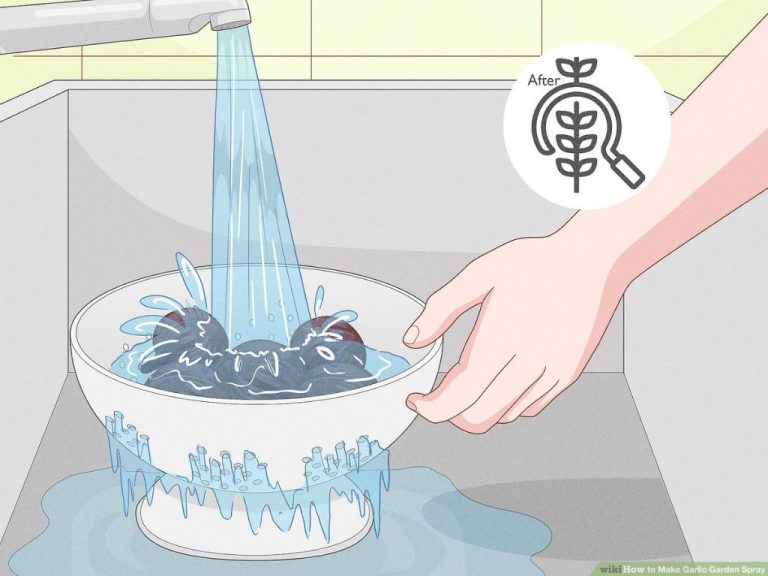Create Your Own Garden Mosaic: Artistic Outdoor Decor
A garden mosaic is a decorative art installation made by arranging small pieces of tile, glass, stone, or other materials into a picture or pattern. Mosaics have been used to decorate outdoor spaces for centuries, with some of the earliest examples found in ancient Roman villas and public spaces. The word “mosaic” comes from the Ancient Greek “mousa” meaning the Muses, which were the Greek goddesses of the arts. This refers to the artistic nature of mosaics.
The tradition of garden mosaics was revived during the Italian Renaissance, when artists designed elaborate mosaic panels and pavement decorations using marble, stone and glass tesserae. Italian villas and gardens featured intricate mythological and nature scenes rendered in mosaic. Later, during the Arts and Crafts movement, mosaic art was reintroduced as a garden decoration in England and America, often in geometric patterns and nature motifs using ceramic tile, seashells and pebbles.
Today, mosaic garden art continues to provide creative, decorative options for landscaping and hardscaping residential and public areas. Mosaics can be designed as pathways, murals, tabletops, accents and more to enhance the aesthetics of outdoor spaces.
Sources:
[ENVISIONING YOUR MOSAIC PALETTE FOR …](https://naturalresources.tennessee.edu/wp-content/uploads/sites/24/2023/06/June-2023-Tree-News-You-Can-Use.pdf)
Benefits of Garden Mosaics
Adding a mosaic to your garden provides artistic flair and visual interest to your outdoor space. The colors and textures of a mosaic can liven up dull areas and breathe new life into your plant beds, patios, walkways, and more. Mosaics allow you to get creative and make your mark by designing something unique and personal for your garden.
The process of creating a mosaic can also be rewarding, according to https://www.coursehorse.com/blog/learn/mosaics/why-learn-mosaics. The repetitive process of cutting and arranging the mosaic pieces provides relaxation and mindfulness. Mosaics allow you to tap into your creative side to make something beautiful with your own two hands.
Planning Your Mosaic
Once you’ve decided to create a garden mosaic, the first step is planning the project. This involves determining the location, size, materials, and design.Some key considerations include:
Location – Pick a spot in your yard or garden that will be visible and highlight the mosaic. Consider sunlight, drainage, and foot traffic.
Size – Measure the area where you plan to install the mosaic. Larger areas may require dividing into sections. Scale the mosaic size appropriately.
Materials – Collect tiles, stones, glass, ceramic pieces in a variety of colors and textures. Smooth, flat materials work best. Plan for extra.
Design – Decide on a pattern or image. Simple repetitive patterns are beginner friendly. Draw out a guide to follow.
Properly planning your garden mosaic will make the installation process go smoothly. Take time to carefully think through the details before gathering supplies and creating your mosaic.
Gathering Materials
The mosaic pieces you use will determine the overall look, texture, and durability of your finished project. Consider gathering various sizes, shapes, colors, and materials for an eclectic look.
Some common materials used in garden mosaics include:
-
Ceramic, porcelain, or natural stone tiles – These come in endless colors and sizes and are durable for outdoor use. Mix glossy and matte finishes for visual interest.
-
Broken pieces of dishes, pottery, or glass – Using recycled materials is budget-friendly. Just be sure to smooth sharp edges.
-
Pebbles, rocks, shells, or glass nuggets – Natural materials blend nicely into garden settings. Tumbled stones offer smooth surfaces.
-
Marbles or beads – These add pops of color and work well for grouted mosaics. Look for exterior-rated options.
-
Mirror or foil tiles – Sparkling accents to catch the light. Check for UV resistance.
Play around with various colors, textures, sizes, and materials until you have a combination you love. Keep in mind the location of your mosaic to select durable, weather-resistant materials.
Design and Pattern Ideas
When planning the design and pattern for your garden mosaic, there are many creative options to consider. Here are some of the most popular styles:
Geometric
Geometric mosaics use shapes like circles, squares, triangles and hexagons arranged in repeating patterns. This orderly look lends a sense of structure and sophistication. Geometric mosaics often utilize a single color or a few complementary hues.1
Organic
Organic mosaics feature free-flowing curved or irregular abstract shapes. These mosaics have a natural, informal feel. Organic mosaics may depict shapes found in nature like leaves, branches or ripples and frequently incorporate multiple colors.1
Floral
Floral mosaics use mosaic tiles arranged into flower shapes and patterns. Vivid colors are often used to create brilliant blooms. These garden mosaics have an elegant, decorative look. Floral motifs can be crafted in great detail or abstract, impressionistic styles.1

Abstract
Abstract mosaics use shape, color and texture in non-representational designs. They often incorporate jagged lines, strong contrast and bright colors for dramatic impact. Abstracts offer great creative flexibility in mosaic tile choice and placement.1
Building the Base
The base provides the foundation for your garden mosaic. It needs to be sturdy and able to withstand the elements. Most outdoor mosaics use concrete or cement as the base:
- Cement – You can pour a fresh cement base and embed or affix your mosaic tiles while it’s still wet. The cement will harden into a solid, weatherproof backing. Make sure to use an appropriate concrete mix for outdoor use.
- Mortar – Pre-mixed mortar is another good option for attaching tiles. Mortar is applied in a layer over the surface you want to cover. Use an adhesive mortar designed for outdoor use.
- Grout – Grout is a waterproof filler applied between the pieces of tile. It helps lock the mosaic in place. Using sanded grout suitable for outdoor use is important.
Prepare the area by digging down a few inches and adding a gravel base for drainage. Make sure the surface is clean before applying cement, mortar or tiles. Allow adequate drying time before grouting.
Arranging the Pieces
Once you have gathered all your materials and built a sturdy base, it’s time to start arranging your mosaic pieces. Experts recommend starting from the center and working your way outward in a spiral pattern.
Begin by placing your most visually interesting or unique pieces in the center to create a focal point. Then build around the focal point using complementary colors and shapes to create visual interest. Ensure pieces are spaced evenly and fit snugly together.
As you spiral outwards, maintain balance and consistency in the pattern and color palette. Vary textures and materials as you work. Consider mixing glass, ceramic, stone and other mediums for lots of variety.
Focus on small sections at a time. Stand back periodically to ensure the overall design is cohesive. Adjust pieces as needed to form the desired imagery or design. Refer to reference photos or your sketch as you arrange the pieces.
With patience and care, your garden mosaic will come to life piece by piece. Just take it slow and enjoy the creative process. For helpful tips, see this video on arranging mosaic pieces: How to Arrange Mosaic Pieces Into a Garden Mosaic
Grouting and Sealing
Grouting is an essential step when creating an outdoor mosaic to fill in the gaps between the tiles and create a cohesive surface. For outdoor mosaics, it’s important to use an exterior-grade grout that is waterproof and designed to withstand the elements.
Apply the grout using a grout float or squeegee, forcing it down into the joints between tiles. Let it sit for a bit before wiping away the excess grout with a damp sponge. Be sure to clean the surface thoroughly so there is no grout residue on the tiles themselves. Allow the grout to dry and cure fully per the manufacturer’s instructions, usually 24-48 hours.
Once the grout has dried, sealing the mosaic is highly recommended as an added protective barrier, especially for outdoor installations. Use a sealant specifically made for grout or natural stone. Refer to the manufacturer’s instructions on application, but generally you’ll brush a thin layer of sealant over the entire mosaic surface, allowing it to soak into the grout lines. Wipe off any excess from the tile faces. Let it cure fully before exposing it to moisture.
Sealing creates a waterproof barrier that prevents stains and damage from weather exposure over time. It may need to be reapplied periodically. Be sure to use a breathable sealant made for outdoor use. Some options are Mosaic & Tile Lab Sealant or Miracle Sealants 511 Porous Plus.
Installing Your Mosaic
Once your mosaic design is complete, it’s time to permanently install it in your garden. Proper installation is crucial for ensuring your mosaic withstands the outdoor elements. Here are some tips for properly installing your garden mosaic:
First, dig out a space for your mosaic, making sure to remove any grass, roots, or debris. The area should be slightly larger than your mosaic to allow room for grouting. Use a level to ensure the ground is flat and even. Any bumps or dips can cause your mosaic to crack once installed.
Next, prepare a concrete backing or cement board base according to the mosaic’s dimensions. This provides a smooth, sturdy surface for the mosaic to adhere to. Apply a layer of thinset mortar to the base using a notched trowel, then carefully press the mosaic into the mortar, sliding it around to ensure full coverage and a strong bond [1]. Use spacers between tiles to keep consistent grout lines.
Once the mosaic is fully pressed into the mortar bed, allow it to cure completely before grouting, typically 24-48 hours. After curing, apply grout between the tiles with a rubber grout float. Let the grout dry completely, then seal the mosaic to protect from weather and staining.
Your mosaic is now ready to add artful flair to your garden for years to come! Be sure to routinely maintain and re-seal it to keep its vibrant colors shining.
Caring for Your Mosaic
A mosaic can last for many years if properly maintained. Here are some tips for keeping your garden mosaic looking its best:
For routine cleaning, use a soft brush and mild soap and water to remove dirt and debris. Avoid using harsh chemicals or abrasive materials that could damage the tiles or grout. If needed, a pressure washer on a low setting can be used to clean more stubborn grime. Take care not to aim the nozzle directly at grout lines as high pressure water can erode the grout over time (https://www.drostle.com/caring-for-your-mosaic/).
Check the grout lines periodically. If cracks or missing grout are present, re-grouting will be necessary. Carefully remove any loose or deteriorating grout using a grout saw or dental pick. Apply new grout, smoothing it into the joints between tiles. Allow to dry completely before sealing the grout to protect it from moisture damage.
Inspect for any damaged, cracked, or missing tiles. Carefully remove and replace any problematic tiles. Use grout or tile adhesive to secure the new tiles in place. Take care to match the color and pattern as closely as possible.
Sealing your mosaic every 1-2 years will help protect it from weathering and moisture damage. Use a penetrating sealer suitable for the mosaic material following the manufacturer’s directions (https://www.mosaicslab.com/blog/caring_for_your_mosaic_artwork/). Re-apply sealant whenever it appears worn or faded.
With proper sealing and occasional maintenance, your mosaic artwork can stay beautiful and add to your garden décor for many years to come.






